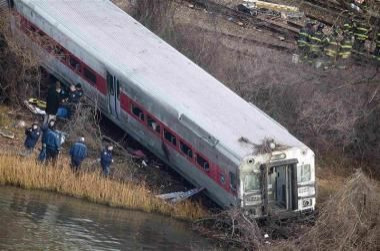'We Could Make The Existing Cars Safer... We're Not Doing That': Hearing On Rail Safety Gets Heated

Federal regulators, lawmakers and oil and rail industry leaders tangled over how to develop clear freight rail safety rules at a subcommittee hearing Wednesday afternoon.
The Department of Transportation (DOT) issued emergency rules Tuesday that require extensive tests on crude oil moving by rail, but industry leaders say they don’t understand the rules to comply with them, and final rules will take months to complete.
“We could make the existing cars safer – we’re not doing that,” Rep. Peter DeFazio said. Until the DOT approves a new design standard, “we’re going to keep running these crummy 111’s and killing people …”
Currently, the DOT requires specification 111 tank cars, used to transport crude and other hazardous as well as nonhazardous materials.
When pressed by DeFazio, Cynthia L. Quarterman, administrator of the Pipeline and Hazardous Materials Safety Administration and the sole DOT representative testifying at the hearing, said the rulemaking process will take an additional 120 days at the very least.
“The reason for the emergency order on yesterday was that we had concerns from the industry that they were unsure of how to respond to our regulations,” Quarterman said at the hearing.
But oil companies have expressed confusion about the emergency order too, Jack Gerard, president and CEO of the American Petroleum Institute (API), said.
“The emergency order … says we need to look at proper testing with sufficient frequency and quality -- we don’t know what that means,” he said. “The response we’ve gotten in the last 20 hours is one of confusion. Our companies know what they have and have tested. We’ve been testing what we have for years.”
The industry currently tests crude for its boiling point and flash point and classifies it under one of nine categories before putting it on a rail car.
Adding to the confusion, Gerard said that the DOT is requesting data from API that the trade association does not even collect. The association's member companies, not API, record measurements about their crude.
"We've encouraged the companies to share the information they have," Brian Straessle, spokesman for API, said.
Concerns over crude transport by rail have grown, despite the increased safety of railroads over the past decade, because several accidents occurred in the past year, including the recent Dec. 30 crash of 20 rail cars in North Dakota that spilled a significant amount of flammable oil.
North America’s oil boom has increased rail transport of crude from 9,500 carloads a year in 2008 to 400,000 carloads last year, according to the U.S. Energy Information Association. The more oil riding the rails, the more likely spills and accidents are to occur. Only 0.0023 percent of hazardous material carloads spill or crash, according to the Association of American Railroads and the American Shortline and Regional Railroad Association. But that small percentage of accidents gets a lot of attention.
© Copyright IBTimes 2024. All rights reserved.






















